In June 2020, City of New Orleans’ archaeologist Michael Godzinski discovered a shell midden during monitoring of construction crews excavating a water line as part of the $3.3M Lake Vista Group A infrastructure improvement project. The excavation yielded prehistoric ceramic, colonial ceramic and glass along with 19th-century ceramic and glass located in a bed of Rangia Cuneata shells, the signature for a prehistoric shell midden in southeast Louisiana. Shell middens are described as a “mound of domestic refuse containing shells and animal bones marking the site of a prehistoric settlement.”
The Lake Vista project’s archaeological find temporarily stopped the waterline project as volunteers from the Louisiana Division of Archaeology and the University of New Orleans quickly arrived to help assess and excavate the deposit.
Most of the items found were associated with the archaeological site of Fort St. John (16OR019), the ruins of which remain standing just across the street from the Lake Vista waterline. Thousands of years before, this area was an Indian mound, positioned at the original shore of Lake Pontchartrain and the west bank of Bayou St. John. Its high and dry location was deemed attractive to French surveyors, and they decided to fortify the shell midden in the opening years of the eighteenth century. The Spanish took over the site in the mid-eighteenth century, followed by the American government in 1803.
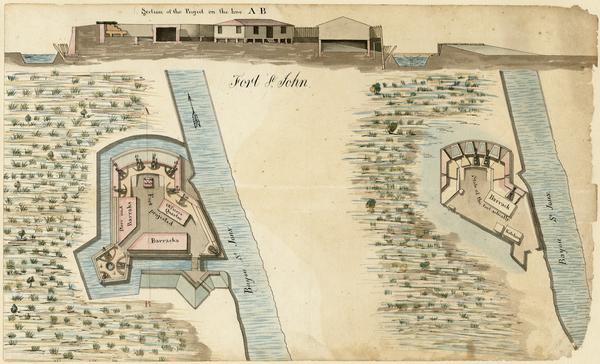 Barthelemy Lafon plan of proposed fort improvements ca. 1814
Barthelemy Lafon plan of proposed fort improvements ca. 1814
Both Spanish and American governments made the fort more substantial, but after the War of 1812 the location was deemed unnecessary for defense purposes. For the next 100 years, the fort and grounds became a leisure/tourist destination. A hotel and amusement park were constructed on the area around the fort until Lake Pontchartrain was filled during the 1920s. At that time the current landscape of Lake Vista began.
_1.jpg) Ca. 1922 aerial photograph of mouth of Bayou St. John. Fort is to left of roller coaster. Note fishing camps.
Ca. 1922 aerial photograph of mouth of Bayou St. John. Fort is to left of roller coaster. Note fishing camps.
The relics found on Killdeer were located in three separate sites that each played a part in the story of the former lakefront location. Intact, prefill soils observed on Killdeer Street indicated that this was the lakefront in the late-19th century, and sandy soils in thin laminations were indicative of gentle waves washing across the shoreline.
A deposit of early-20th century liquor bottles and architectural debris was found around relict wooden pilings. The pilings appear to have been part of a fishing camp similar to those that formerly dotted the lakefront all the way to Little Woods. If in existence today, this small camp on stilts over the marshy lakefront would be nestled amongst mansions located a quarter- or half mile inland from Lake Pontchartrain.
The other artifact cluster locations seemed to consist of fill and refuse brought over from the fort. One of the fill episodes seems to date from the 1890s, when a large fire swept through the nearby hotel buildings that had been constructed on the fort. This deposit was burned black and had tongue-in-groove floorboards and included additional architectural debris, late 19th-century ironstone, porcelain serving ware and local purveyors’ aqua glass water bottles. Additionally, a mug embossed with “SPANISH FORT PARK” was recovered, an indication that debris from one of the conflagrations at the fort was discarded to low lying areas to the west.
None of the subsequent archaeological finds stopped construction work on the Lake Vista Group A project, however, when older artifacts (colonial and prehistoric) began to turn up in the shell, the CNO Archaeologist paused the work and brought in volunteers to help with a formal excavation unit and to sift through the shells for artifacts. The new dig area turned out to be approximately 20 or 30 feet in length from east to west. The site extended to the north and south and possibly into residents’ yards but the group only investigated areas where the construction project would impact.
Further excavation of the shells was necessary when construction crews repaved the street. More artifacts were retrieved at this time. Although a large sample of artifacts had already been recovered, 100 percent of the artifacts were recovered from the shells removed by the street paving to confirm that there were no human remains. Animal bones and botanical portions were discovered, along with numerous turtle shells that could be of either historic or prehistoric origin but no human bones were observed. Sifting through all the shell was necessary because shell mounds were also used as burial mounds and detecting human remains will trigger the Louisiana Unmarked Human Burial Sites Preservation Act , a state statute that protects unmarked burials.
The volunteers found an array of Native American and colonial European ceramic, as well as a variety of 19th century items. Fairly large fragments of pre-colonial and colonial vessels were recovered, along with one especially nice piece with decorations came from a bowl. It featured a Natchezan Indian design that was interpreted by the State Archaeologist as “Fatherland Incised.” These wares are consistent with French settlers arriving in the valley and may be indicative of trade goods.
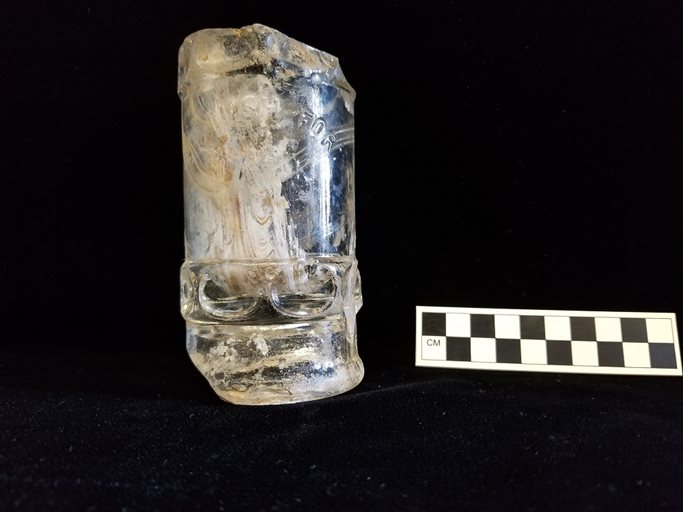 "SPANISH FORT PARK" beer mug
"SPANISH FORT PARK" beer mug
Colonial ceramic was dominated by “faience,” a bluish tinted ware with numerous imperfections in its construction and decoration. Most of the pieces located were fragments of plates but a striped blue-on-white vessel handle was also located, along with additional pieces of plates that look like Spanish majolica, however they have not been analyzed yet.
Numerous coins were also unearthed, including one with a coat of arms (possibly Spanish) and a few German Reichsmarks from the 1890s. This is consistent with the location of a German beer garden called “Over the Rhine” located on the bayou that featured oompah bands. Other items recovered include: a button with a bird in profile and the number 79, which was probably Spanish military-related but is awaiting analysis; and a metal Mardi Gras medallion from 1892 engraved with “pro bono publico” and “souvenir of the carnival.”
There were numerous interesting items amongst the thousands recovered and the excavation resulted in the discovery of an array of artifacts that allows us to help interpret and illustrate a very dynamic place in New Orleans history.
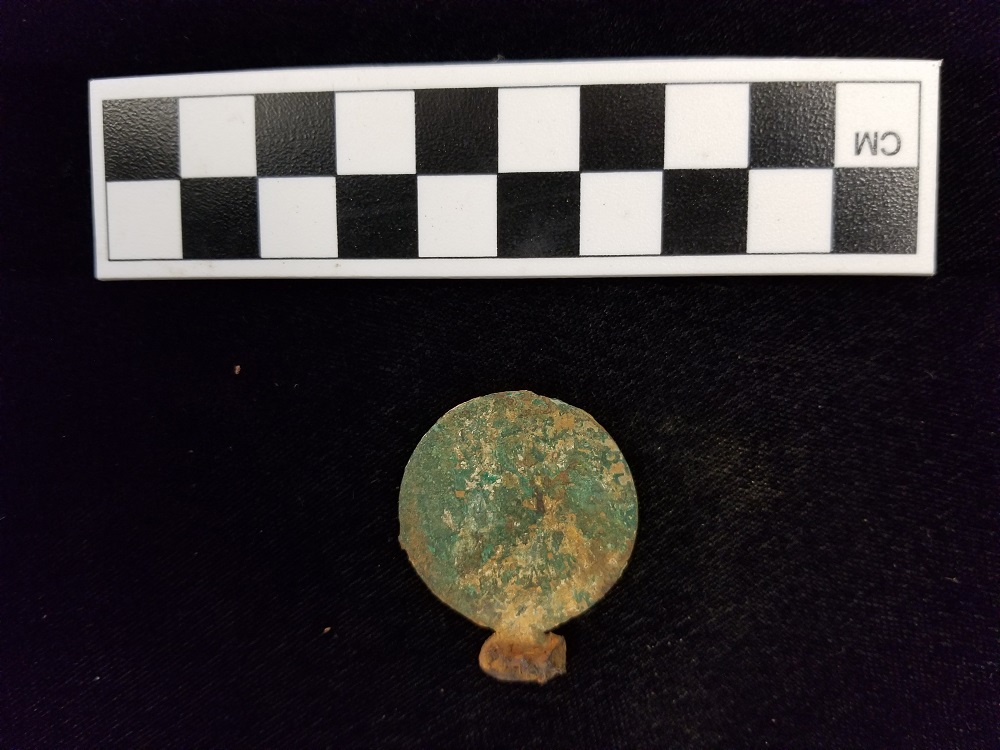 Ca. 1892 Mardi Gras medallion from Rex parade
Ca. 1892 Mardi Gras medallion from Rex parade
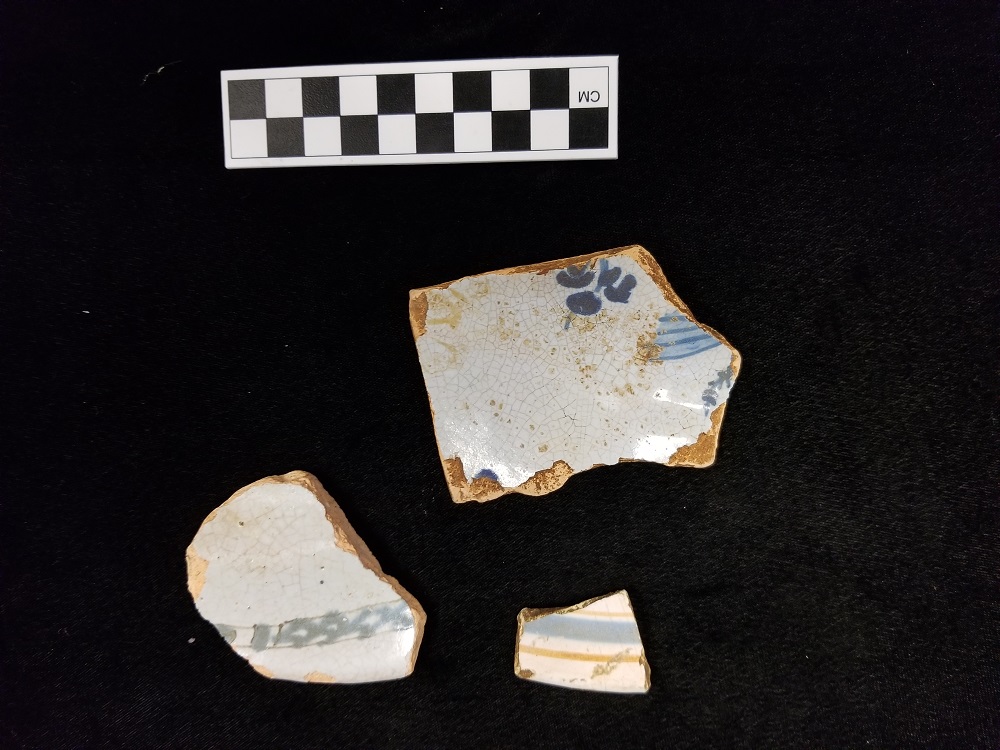 French faience, ca. 1700-1800
French faience, ca. 1700-1800
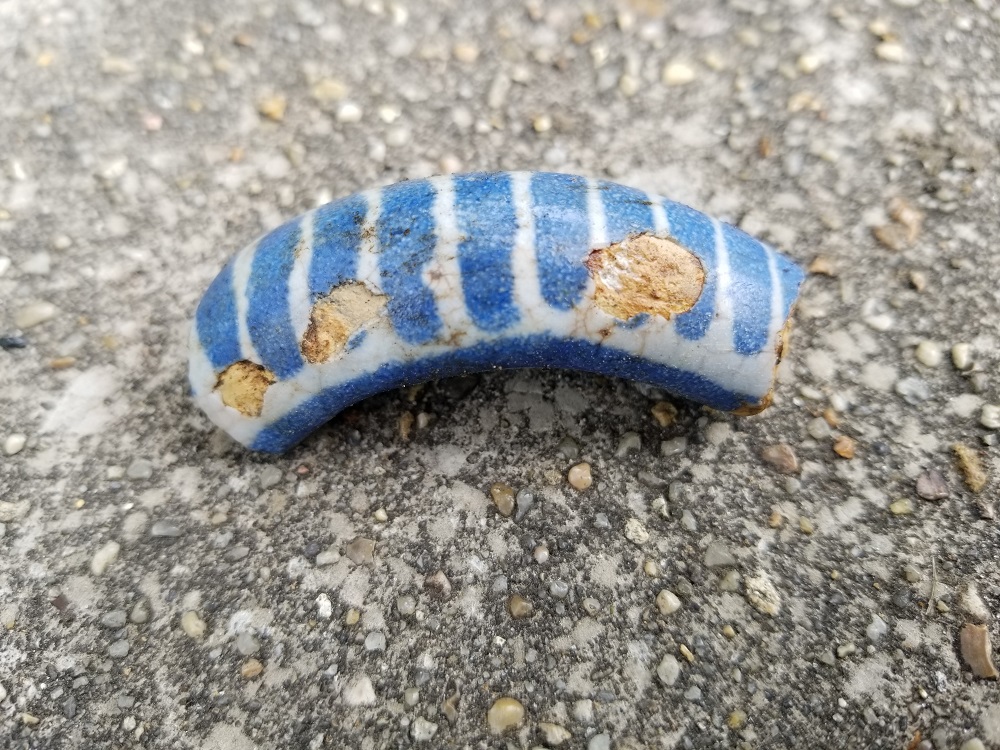 Faience vessel handle, Normandy blue-on-white, ca. 1700-1800
Faience vessel handle, Normandy blue-on-white, ca. 1700-1800
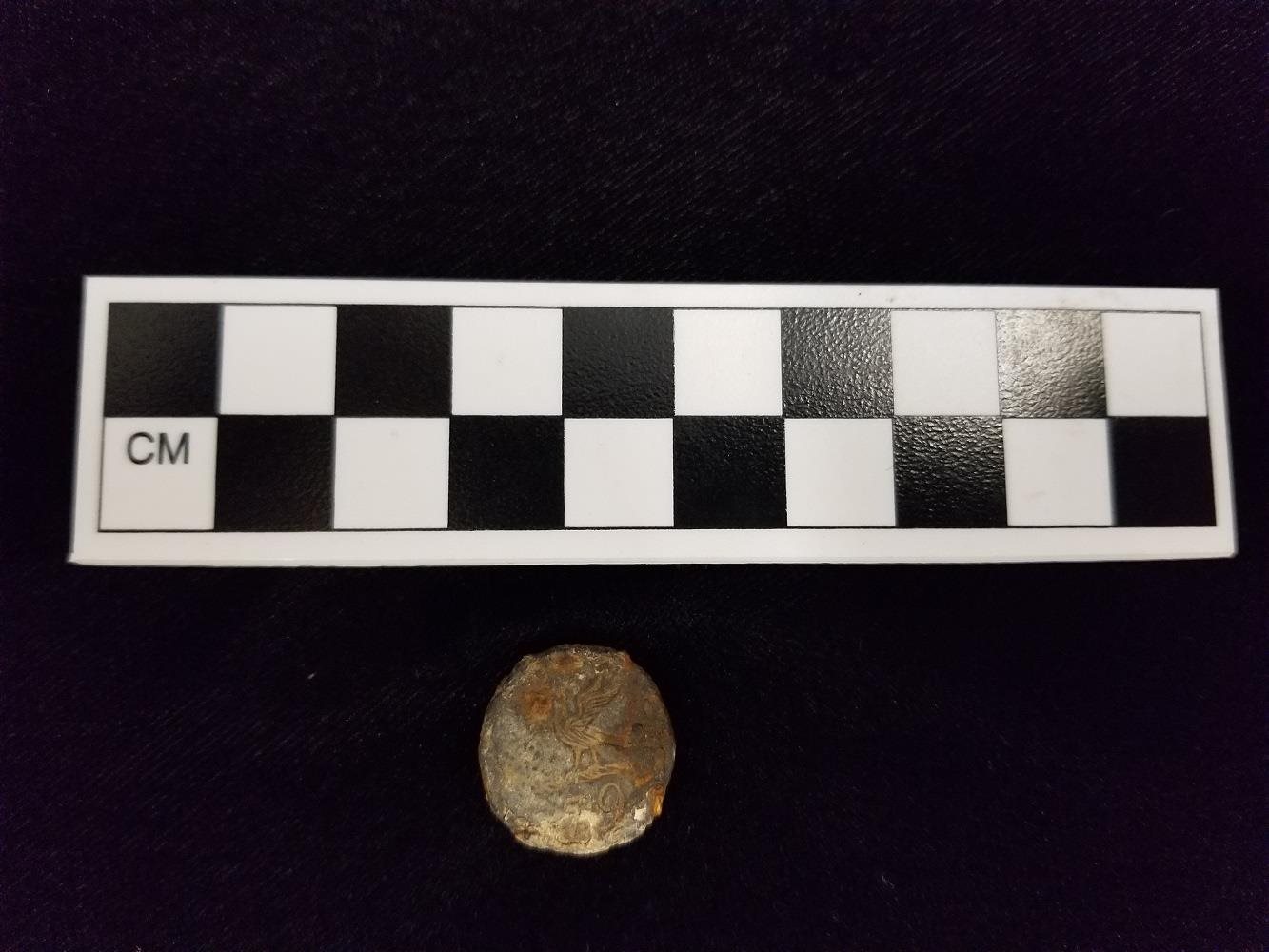 Metal button with bird in profile and number "79."
Metal button with bird in profile and number "79."
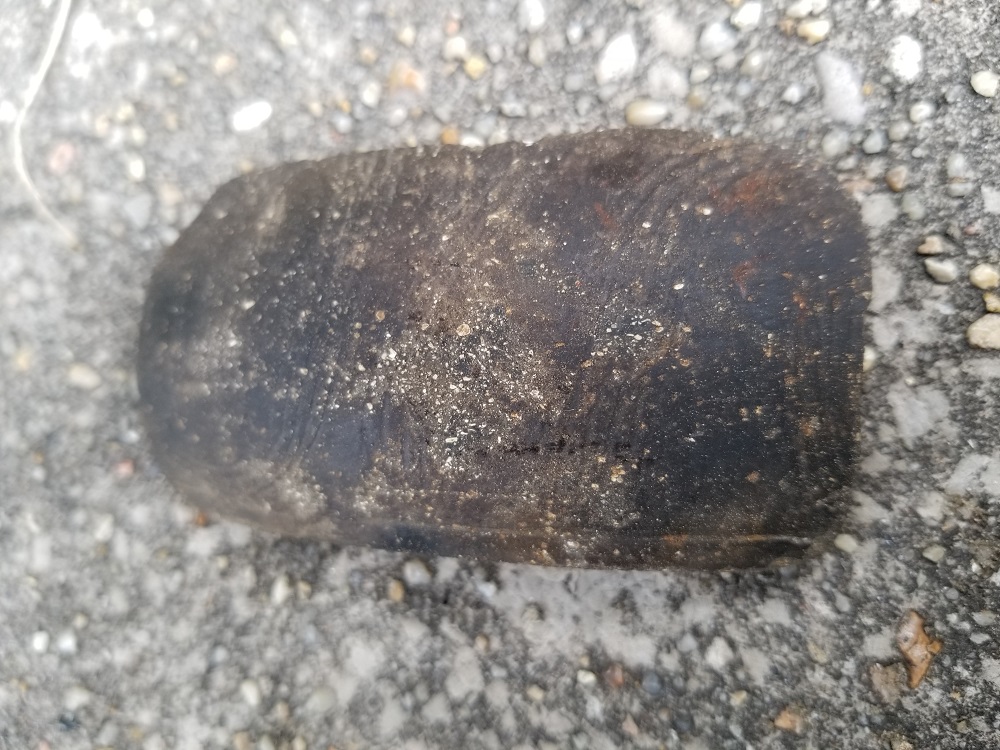 Native American jar or bottle sherd, Fatherland Incised.
Native American jar or bottle sherd, Fatherland Incised.